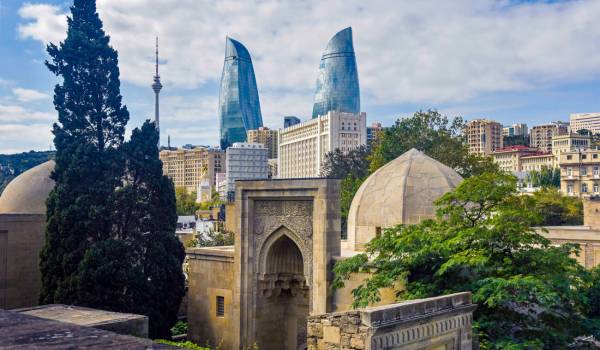
Baku
For fruit and vegetable production "Azerbaijan's greenhouse" Shamkir is located in the northwest of the Republic of Azerbaijan. Shamkir is one of the early medieval cities.
The region is also a great place to see the German heritage of the western region and even the ruins of an ancient city that once served as a stop on the Silk Road. You can here listen to the ashug national music as well. Moreover, the picturesque road to the Lesser Caucasus Mountains passes through this region.
Shamkir has a rich history from the German period. To get acquainted with the history of the region, you can go to the local Museum of History and Ethnography, located behind the Lutheran Church, which shows the history of the city, beginning with the Persian Achaemenid Empire (550 BC). Better yet, head 10 kilometers east of the city to explore the ruins of medieval Shamkir, located north of the village of Muktariyat on the left bank of the Shamkirchay River. The ruins of the ancient city of Shamkir are on the left bank of the Shamkir River. The area of the city fortress was 20 hectares. The city fortress is connected by two bridges on the right bank of the river. The remains of this bridge still remain.
There is a fortress on the Silk Road that dates back to the 8th-13th centuries and has never been fully restored. Excavations that began in 2006 allowed us to see important parts of a fortress called Naringala, the remains of streets and buildings that are rare examples of the Arran School of Architecture.
In addition, there are many architectural monuments in the area. Shamkir city ruins of IX-XI centuries, Shamkir bridge of IX-XI centuries, Shamkir fortress (Mukhtariya village), Baydar city ruins of XI-XII centuries (Bayramli village), Maiden tower of XI-XII centuries (Seyfali village), XVI - Mosque of the XVII century (Abbasli village), Maiden Tower of the XI century (Tatarli village), Bridge of the XVI-XVII centuries (Tahnali village), Divan tower of the XVII century (Yeni Hayat village), Koroglu fortress of the XVI-XVII centuries ( Shamkir (city)), Iron Age Galaboynu fortress (Atabey village), early medieval Pir (Church), (Dag-Dashbulag), German church built in 1909 (Shamkir (city)), The Oghuz cemetery of XI-XII centuries (Yeni Seyfali village), the bridge (over the river Zayam) of the XVI-XVII centuries.